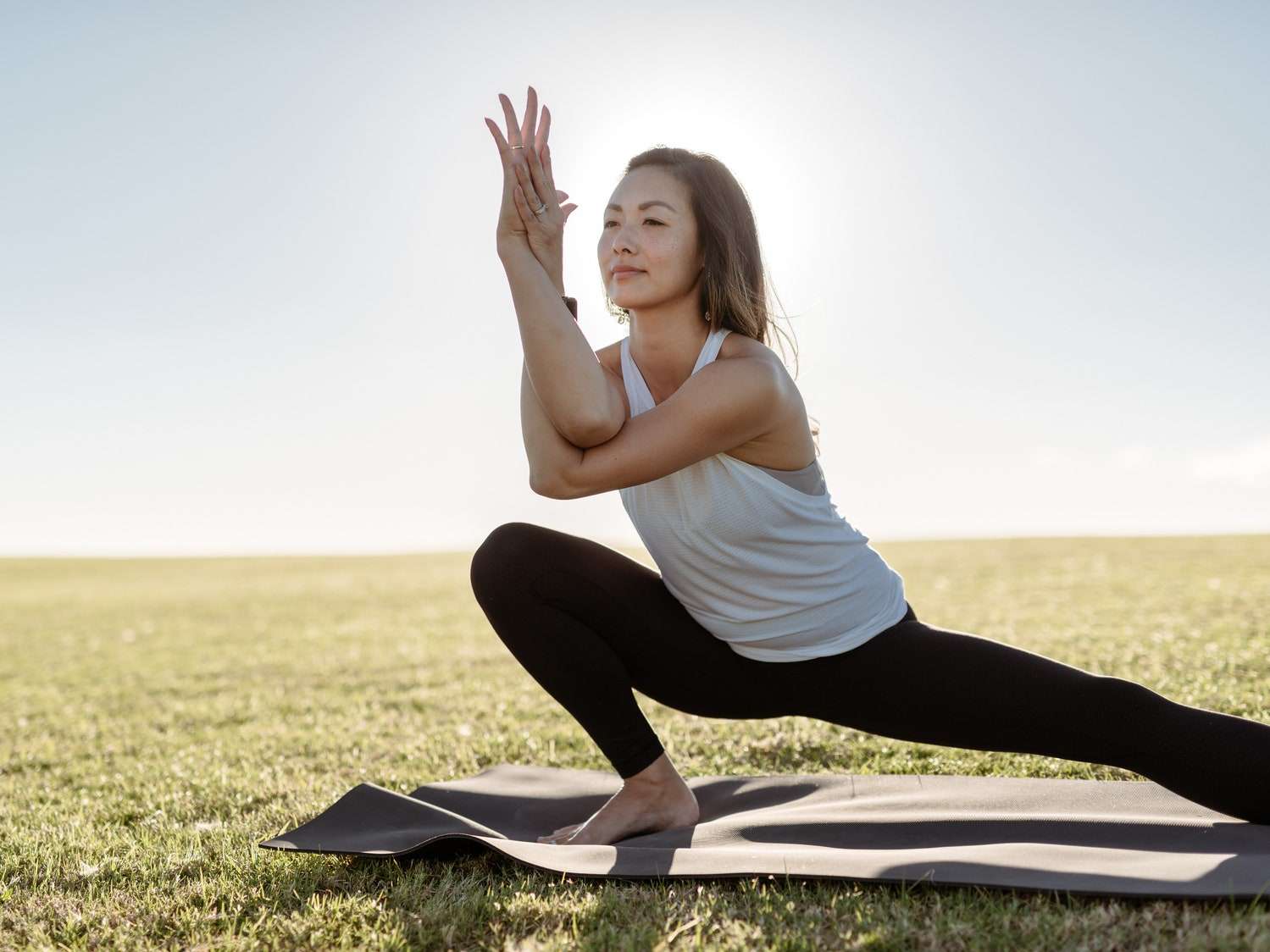Stretching is an often overlooked but crucial aspect of any fitness routine. It not only plays a vital role in preventing injuries, but it also improves flexibility, enhances athletic performance, and promotes overall well-being. Incorporating stretching exercises into your fitness regimen can help you achieve better results and maintain a healthy, balanced body. Whether you’re a seasoned athlete or just starting your fitness journey, understanding the significance of stretching is key to unlocking your full potential.
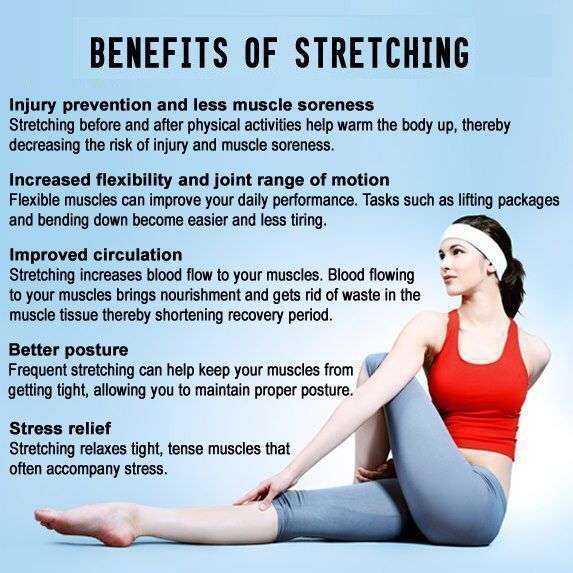
Benefits of stretching
Improves flexibility
Stretching plays a crucial role in improving flexibility, allowing you to move your joints and muscles through their full range of motion. By regularly stretching, you can gradually increase your flexibility and achieve a greater range of motion in various activities. This can be particularly beneficial for athletes who require greater flexibility in their respective sports, such as gymnasts, dancers, and martial artists. Increased flexibility can also enhance your overall physical performance in everyday activities, making tasks like bending, reaching, and lifting much easier and more efficient.
Increases range of motion
Stretching not only improves flexibility but also increases your range of motion. Range of motion refers to the distance and direction your joints can move within their normal function. As you stretch regularly, your muscles and connective tissues become more pliable, allowing for greater extension and flexion of your joints. This increased range of motion can have a positive impact on your daily activities, sports performance, and overall quality of life.
Enhances athletic performance
Proper stretching techniques can significantly enhance your athletic performance. By incorporating stretching into your pre-workout routine, you prepare your muscles and joints for the physical demands of exercise. Stretching helps to activate and warm up the targeted muscles, increasing blood flow and oxygen delivery while loosening up any tightness or stiffness in the muscle fibers. This preparation allows your body to perform more efficiently, reducing the risk of muscle strains and optimizing your overall athletic performance.
Reduces muscle soreness
Stretching post-workout can help alleviate muscle soreness and promote faster recovery. Engaging in intense physical activity can lead to the accumulation of lactic acid and other metabolic waste products in your muscles. This buildup can cause post-exercise muscle soreness and stiffness. By stretching after a workout, you can help flush out these waste products and improve circulation to the muscle tissues, promoting a quicker recovery process. Stretching also helps to relax and lengthen the muscles, reducing the feeling of tightness and discomfort commonly experienced after exercising.
Prevents injuries
One of the primary benefits of stretching is its ability to prevent injuries. When muscles are tight and inflexible, they are more susceptible to strains, tears, and other injuries during physical activity. By regularly stretching, you can increase the extensibility and elasticity of your muscles, reducing the risk of these injuries. Stretching also enhances the coordination between muscles and improves balance, allowing for better control and stability during movement. This is particularly important for athletes, as proper muscle balance and coordination can help prevent common sports-related injuries.
Types of stretching
Static stretching
Static stretching is perhaps the most well-known and commonly practiced form of stretching. It involves holding a stretch in a fixed position for a prolonged period, typically between 15 to 60 seconds. This stretch allows the targeted muscle groups to gradually elongate and relax. Static stretches are primarily performed to improve flexibility and range of motion. Examples of static stretches include the standing hamstring stretch, seated butterfly stretch, and the quadriceps stretch.
Dynamic stretching
Dynamic stretching involves moving through a full range of motion in a controlled manner. Unlike static stretching, dynamic stretching focuses on active and rhythmic movements that mimic the motions of the activity or sport you are about to engage in. This type of stretching is commonly used as a warm-up before physical activity, as it helps to increase blood flow, activate the relevant muscle groups, and improve joint mobility. Examples of dynamic stretches include walking lunges, arm circles, and high knees.
Ballistic stretching
Ballistic stretching involves using bouncing movements to extend your range of motion. This type of stretching utilizes the momentum of the moving body part to push past its normal limit. While ballistic stretching can help improve flexibility, it is generally not recommended for most individuals, as it can lead to muscle strains and other injuries. This type of stretching is more commonly used by athletes who require specific explosive movements in their sport, such as gymnasts and sprinters.
Proprioceptive neuromuscular facilitation (PNF) stretching
PNF stretching is a technique that combines passive stretching and isometric contractions to improve flexibility and range of motion. It involves a series of contractions and relaxations of the targeted muscle group. PNF stretching is typically done with a partner or with the assistance of a prop, such as a strap or towel. This type of stretching is often used in a physical therapy setting and can be highly effective in increasing flexibility and restoring proper muscle function.
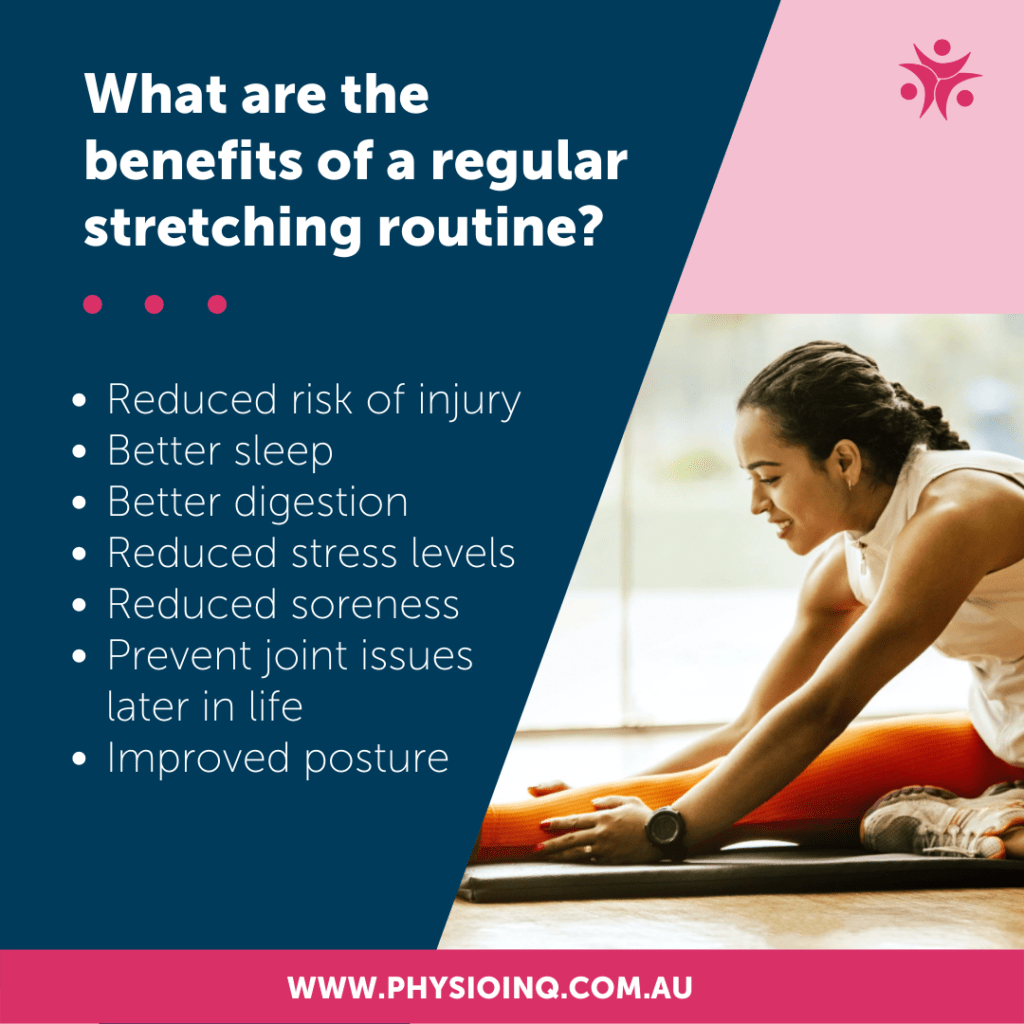
Best time to stretch
Before a workout
Stretching before a workout is recommended to prepare your muscles and joints for the upcoming physical activity. By engaging in a proper warm-up routine, which includes dynamic stretching, you can increase blood flow to the muscles, improve muscle activation, and enhance joint mobility. This prepares your body for the demands of exercise and reduces the risk of injury. Dynamic stretching before a workout can also help to improve your performance by optimizing your muscle coordination and reaction time.
After a workout
Stretching after a workout is essential in aiding muscle recovery and reducing muscle soreness. Post-workout stretching helps to release any tension or tightness that may have built up in the muscles during exercise. It also promotes blood flow to the muscles, which can aid in the removal of metabolic waste products and support the delivery of nutrients and oxygen for muscle repair. By incorporating static stretching into your cool-down routine, you can promote flexibility, reduce muscle stiffness, and promote overall recovery.
During a workout
In some cases, stretching during a workout can be beneficial, especially when engaging in activities that require prolonged static positions or flexibility. For example, in a yoga or Pilates class, stretching is an integral part of the workout itself. However, it is essential to listen to your body and be mindful of your limits. Overstretching during a workout can increase the risk of injury, so it is important to maintain proper alignment and seek guidance from a qualified instructor, especially if you are new to a specific exercise or technique that involves stretching.
For sedentary individuals
Even if you are not actively engaging in a fitness routine, stretching can still provide numerous benefits for sedentary individuals. Sitting for long periods can cause muscle imbalances, tightness, and reduced joint mobility. Incorporating regular stretching breaks into your daily routine can help counteract these effects. Stretching can promote blood flow, improve posture, relieve muscle tension, and increase overall mobility. Whether you work in an office, spend a lot of time driving, or have a generally sedentary lifestyle, taking a few minutes to stretch throughout the day can make a significant difference in your overall well-being.
Precautions and considerations
Avoid overstretching
While stretching is beneficial, it is crucial to avoid overstretching. Overstretching can lead to muscle strains, ligament sprains, and other soft tissue injuries. Always stretch within your current range of motion and avoid forcing yourself into positions that cause pain or discomfort. Remember that flexibility takes time to develop, and pushing too hard can result in injury and setbacks. Gradually progress your stretches and listen to your body’s cues to prevent overstretching.
Do not stretch cold muscles
Stretching cold muscles can increase the risk of injury. It is important to warm up your body before engaging in stretching exercises. Dynamic stretching or a light cardiovascular activity, such as brisk walking or light jogging, can help increase blood flow to the muscles and raise your body temperature. This prepares your muscles for stretching and decreases the likelihood of strains or pulls. Save the static stretching for after your warm-up or workout.
Focus on major muscle groups
When designing your stretching routine, it is important to focus on your major muscle groups. This includes muscles in your neck, shoulders, chest, back, arms, forearms, legs, calves, hips, hamstrings, quadriceps, and glutes. Targeting these muscle groups ensures that your body is appropriately stretched and increases overall flexibility. Additionally, stretching major muscle groups can help alleviate muscle imbalances that may be caused by your daily activities or exercise routine.
Modify or avoid certain stretches based on pre-existing conditions
If you have pre-existing conditions or injuries, it is important to modify or avoid certain stretches as advised by a healthcare professional or qualified fitness instructor. Certain stretches may exacerbate existing injuries or conditions, so it is important to seek guidance to ensure that your stretching routine is safe and effective for your specific needs. If you are unsure about a particular stretch or have any concerns, it is always best to consult with a medical professional or trained expert.
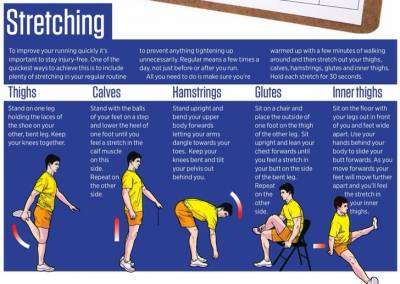
Stretching techniques and exercises
Now that we have explored the benefits of stretching, the various types of stretching, and when to incorporate stretching into your fitness routine, let’s delve into specific stretching techniques and exercises you can incorporate for different muscle groups:
Neck stretches
Neck stretches can help alleviate tension and stiffness in the neck and upper back. Gently tilting your head to the side and holding the stretch for 15-30 seconds on each side can help stretch the neck muscles. You can also add a gentle forward and backward tilt to target different areas of the neck and upper back.
Shoulder stretches
Shoulder stretches can help improve flexibility and relieve tightness in the shoulder area. Reach one arm across your chest and use the other arm to gently pull the extended arm closer to your body. Hold the stretch for 15-30 seconds and then repeat on the other side. Another effective shoulder stretch is the shoulder extension stretch, where you interlock your fingers behind your back and gently lift your arms upward.
Chest stretches
Chest stretches are important to counteract the hunched posture caused by sitting or working at a desk for long periods. A popular chest stretch is the doorway stretch, where you place your forearms on either side of a doorway and gently lean forward, feeling the stretch in your chest muscles. Another chest stretch involves interlocking your fingers behind your back and lifting your arms upward, opening up the chest.
Back stretches
Back stretches can help alleviate lower back pain and improve overall spine flexibility. Simple stretches like the cat-camel stretch, where you get on all fours and alternate between rounding and arching your back, can help relieve tension and improve range of motion. The child’s pose in yoga is another effective back stretch that involves sitting on your heels and gently lowering your chest toward the floor, reaching your arms forward.
Arm and forearm stretches
Arm and forearm stretches are particularly important for individuals who perform repetitive tasks involving their hands and wrists, such as typing or lifting. Wrist extensions and flexions, where you extend and flex your wrists with your arms extended in front of you, can help stretch the forearm muscles. Tricep stretches, where you reach one arm overhead and bend it at the elbow, gently pulling it towards the opposite shoulder, can also be beneficial.
Leg and calf stretches
Leg and calf stretches are essential for improving lower body flexibility and preventing tightness or cramping. Calf stretches can be done by placing your hands on a wall, stepping one leg back, and pressing the heel of the extended leg into the floor. You should feel a stretch in the calf muscle. For leg stretches, lunges, sitting or standing forward bends, and the butterfly stretch, which involves sitting on the floor with the soles of your feet together and gently pressing your knees towards the floor, can be effective.
Hip stretches
Hip stretches are beneficial for individuals who sit for extended periods or have tight hip muscles. A popular hip stretch is the figure four stretch, where you lie on your back and cross one ankle over the opposite knee, gently pulling the uncrossed leg towards your chest. This stretch targets the hip muscles and helps improve flexibility. Pigeon pose in yoga is another effective hip opener, involving sitting on the floor with one leg extended behind you and the other leg positioned in front of you, bent at the knee and foot tucked towards the opposite hip.
Hamstring stretches
Hamstring stretches can help improve flexibility in the back of the thighs and reduce the risk of lower back pain and hamstring strains. The seated hamstring stretch, where you sit on the floor with one leg extended and gently lean forward, reaching towards your toes, can effectively target the hamstring muscles. Another option is the standing hamstring stretch, where you extend one leg out in front of you and lean forward, reaching towards your toes while keeping your back straight.
Quadriceps stretches
Quadriceps stretches are crucial for individuals who engage in activities that require kicking, jumping, or running. The standing quadriceps stretch involves standing upright and bending one knee, grabbing the ankle or foot with the hand on the same side, and gently pulling the foot towards the glutes. Another effective quadriceps stretch is the lying quadriceps stretch, where you lie on your side, grab your top ankle or foot, and gently pull it towards your glutes.
Glute stretches
Glute stretches can help alleviate tightness and discomfort in the hip and buttock area. The seated glute stretch involves sitting on the floor with one leg bent and the other leg extended straight in front of you. Cross the bent leg over the extended leg, placing the foot on the floor outside the extended leg. Gently twist your torso towards the bent knee, feeling the stretch in your glute muscles. Another effective glute stretch is the pigeon pose, as mentioned previously under hip stretches.
Stretching and specific fitness goals
Stretching can be tailored to specific fitness goals. Here are some considerations for incorporating stretching into your fitness routine based on your objectives:
Stretching for muscle building
If your goal is to build muscle, stretching can play a supportive role in your routine. Proper stretching helps maintain muscle length and range of motion, allowing for optimal muscle contractions during resistance training. Stretching between sets or on rest days can help reduce muscle tightness and promote muscle recovery. Additionally, stretching opposing muscle groups can help maintain overall muscle balance and prevent muscle imbalances that could limit your progress.
Stretching for weight loss
When aiming for weight loss, stretching can be used in conjunction with cardiovascular exercise and a healthy diet to support your efforts. Stretching increases blood flow, limb mobility, and muscle activation, helping to improve overall exercise performance and efficiency. By incorporating stretching into your warm-up and cooldown routines, you can enhance your workouts, minimize the risk of injury, and promote overall well-being.
Stretching for endurance training
Endurance training involves prolonged periods of aerobic activity, such as running, cycling, or swimming. Stretching can benefit endurance athletes by improving overall flexibility and joint mobility, ensuring optimal movement efficiency. Regular stretching helps prevent muscle imbalances and reduces the risk of overuse injuries. Dynamic stretching before endurance activities can help prepare the muscles for the repetitive movements involved, while static stretching after the workout can aid in recovery and reduce post-exercise muscle soreness.
Stretching for flexibility training
Flexibility training focuses on achieving and maintaining a wide range of motion in various joints and muscle groups. Stretching is a fundamental component of flexibility training, as it helps lengthen muscles and connective tissues. Regular stretching, particularly static and PNF stretching, can gradually increase flexibility over time. Incorporating stretching into a regular flexibility training routine can improve performance in activities such as dance, yoga, and martial arts.
Stretching for injury rehabilitation
Stretching plays a significant role in injury rehabilitation, allowing individuals to regain flexibility and range of motion after an injury. Physical therapists frequently incorporate stretching exercises into rehabilitation programs to aid in the recovery process. By addressing muscle imbalances, improving joint mobility, and reducing scar tissue formation, stretching can help individuals recover from injuries, regain functionality, and prevent future injuries. However, it is crucial to follow the guidance of a healthcare professional during the rehabilitation process to ensure safe and effective stretching practices.
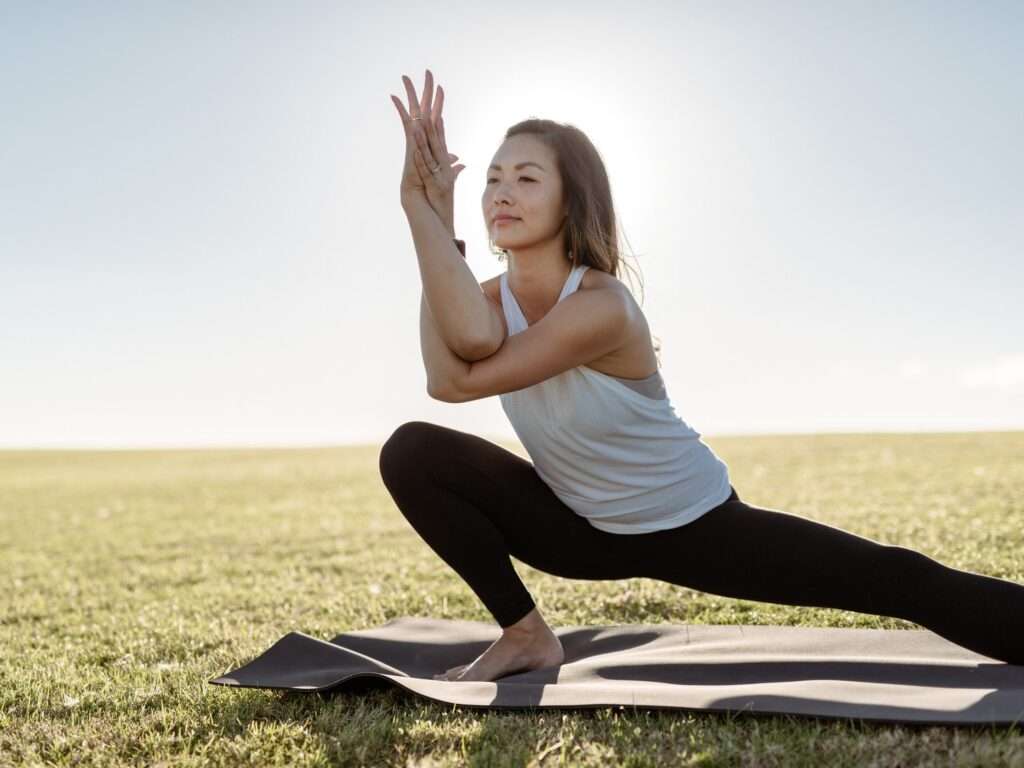
Common misconceptions about stretching
Stretching can prevent all injuries
While stretching can be a valuable tool for injury prevention, it does not guarantee complete protection against all injuries. Stretching primarily improves flexibility, muscle elasticity, and joint range of motion, reducing the risk of certain injuries. However, other factors such as proper technique, appropriate equipment, and gradual progression in training also play crucial roles in injury prevention. It is important to incorporate a well-rounded approach to injury prevention that includes strength training, conditioning, and proper rest and recovery.
Stretching before exercise improves performance
There is a common misconception that static stretching before exercise enhances performance. However, research suggests that static stretching can actually decrease muscle power and impair performance in activities that require explosive movements, such as sprinting or jumping. Dynamic stretching, on the other hand, is more appropriate for warm-ups before exercise, as it activates the muscles, increases blood flow, and prepares the body for the upcoming activity. To optimize performance, it is important to include a dynamic warm-up routine that incorporates movements specific to the activity you are about to engage in.
Only certain individuals need to stretch
Stretching is beneficial for individuals of all fitness levels and lifestyles, not just athletes or those engaging in specific activities. Whether you are sedentary, engage in occasional physical activity, or have an active workout routine, incorporating stretching can help improve flexibility, prevent injuries, and enhance overall well-being. Even everyday activities, such as bending, reaching, and lifting, can benefit from improved flexibility and range of motion. Tailor your stretching routine to your specific needs and goals, and enjoy the benefits of incorporating stretching into your daily life.
Stretching is only for athletes
While stretching is indeed beneficial for athletes, it is not solely reserved for them. Stretching can benefit people from all walks of life, regardless of age, fitness level, or activity level. Whether you lead a sedentary lifestyle, engage in recreational activities, or participate in sports, stretching can help improve your overall physical performance and enhance your quality of life. Regular stretching can provide long-term benefits by promoting flexibility, preventing injuries, and maintaining muscle balance in individuals of all backgrounds.
Incorporating stretching into a fitness routine
To incorporate stretching into your fitness routine, consider the following tips:
Developing a stretching routine
Developing a consistent stretching routine is key to reaping the benefits of stretching. Determine how much time you can dedicate to stretching each day and create a routine that fits your schedule. Start with a few stretches for major muscle groups, gradually increasing the number and complexity of stretches as your body becomes more flexible. Incorporate stretches that target areas of tightness or discomfort, and consult resources such as fitness professionals or online videos for guidance on proper stretching techniques.
Appropriate duration and frequency
The duration and frequency of your stretching routine will depend on various factors, including your fitness goals, flexibility level, and available time. Aim for at least 10 minutes of stretching per session and consider stretching major muscle groups at least two to three times per week. If you have specific flexibility goals, such as improving your splits or achieving a deeper backbend, you may need to dedicate more time to targeted stretching for those areas. Listen to your body and adjust your routine accordingly, gradually increasing intensity and duration as your flexibility improves.
Warming up before stretching
Before beginning your stretching routine, it is important to warm up your body. Engaging in a light cardiovascular activity, such as brisk walking or cycling, can help raise your body temperature and increase blood flow to the muscles. Warm muscles are more flexible and less prone to injury, making them more receptive to stretching. After your warm-up, incorporate dynamic stretches that mimic the motions of the activity or sport you are about to engage in. This will prepare your muscles and joints for the specific movements you will be performing.
Creating a balanced fitness routine
Incorporating stretching into a balanced fitness routine is essential for overall health and well-being. In addition to regular stretching, prioritize cardiovascular exercise, strength training, and rest and recovery. These components work synergistically to promote cardiovascular health, muscular strength and endurance, and overall physical performance. Consider consulting with a fitness professional to create a well-rounded fitness routine that incorporates stretching appropriately for your specific goals and needs.
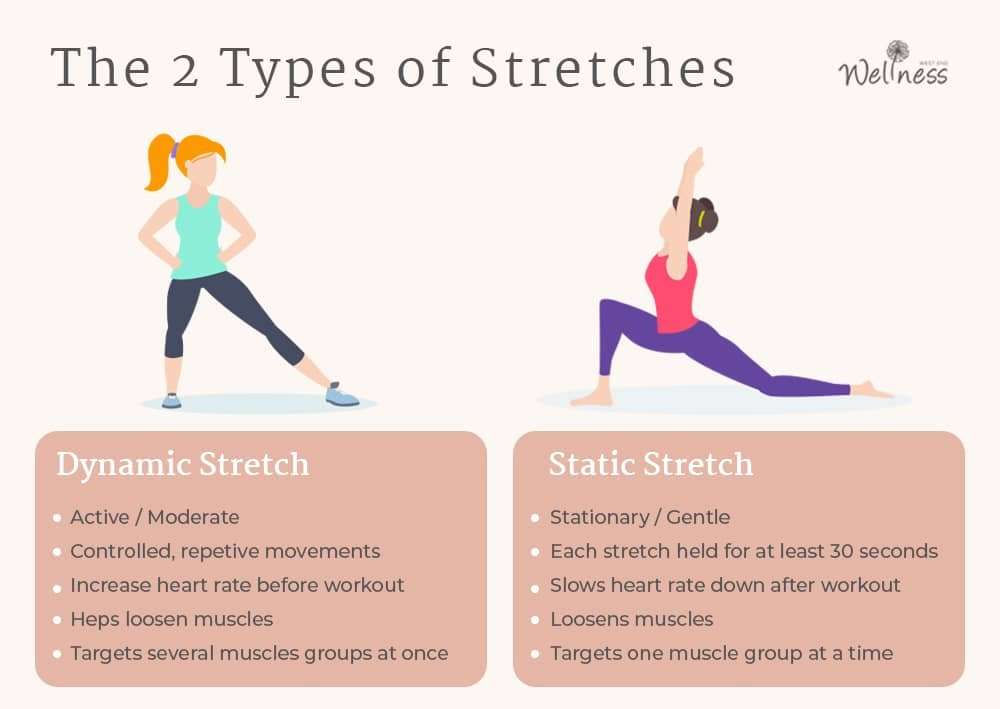
Stretching alternatives
While conventional stretching techniques are effective, there are other stretching alternatives that you can explore to add variety and target different aspects of your fitness routine. Here are a few popular options:
Foam rolling
Foam rolling, also known as self-myofascial release, involves using a cylindrical foam roller to apply pressure to various muscle groups. This technique helps release muscle tightness and trigger points, similar to receiving a deep tissue massage. Foam rolling can be beneficial for increasing flexibility, improving muscle recovery, and reducing muscle soreness. It is commonly used as part of a warm-up routine or post-workout cooldown.
Yoga
Yoga combines physical postures, breathing exercises, and meditation to promote overall well-being. The practice of yoga includes a wide range of stretching exercises that target different muscle groups, improve flexibility, and promote mental focus and relaxation. There are various styles of yoga to choose from, ranging from gentle and restorative to more vigorous and dynamic practices. Yoga can be a great addition to your fitness routine, providing a unique blend of flexibility, strength, and mindfulness.
Pilates
Pilates is a low-impact exercise method that focuses on core strength, flexibility, and overall body awareness. While not solely a stretching-based practice, Pilates incorporates specific stretching exercises and dynamic movements designed to improve flexibility and range of motion. The controlled and precise movements in Pilates engage both the mind and body, promoting better posture, muscle balance, and overall functional strength. Pilates can be performed on a mat or with specialized equipment, such as a Reformer or Cadillac.
Mobility exercises
Mobility exercises specifically target joint mobility and stability. These exercises aim to improve the range of motion, coordination, and control of your joints, allowing for better movement efficiency and reducing the risk of injury. Mobility exercises can be integrated into your warm-up or cooldown routine and may include movements like wrist circles, ankle rotations, hip swings, or shoulder rotations. These exercises are often performed in a controlled manner and can be modified to suit different fitness levels and needs.
Conclusion
Incorporating stretching into your fitness routine offers numerous benefits for overall health, performance, and injury prevention. Stretching improves flexibility, increases range of motion, enhances athletic performance, reduces muscle soreness, and prevents injuries. By understanding the different types of stretching, when to stretch, and taking necessary precautions, you can optimize your stretching routine and achieve your fitness goals.
Whether you are a seasoned athlete, a sedentary individual, or someone seeking to enhance your overall well-being, there is a stretching routine that can fit your needs and goals. From neck stretches to glute stretches, stretching exercises can target specific muscle groups and improve mobility throughout your entire body.
Remember to listen to your body, progress gradually, and consult with a healthcare professional or qualified fitness instructor if you have any pre-existing conditions or concerns. Explore stretching alternatives, such as foam rolling, yoga, Pilates, and mobility exercises, to add variety and balance to your routine.
Incorporating stretching into your fitness journey is not only beneficial for your physical health but also promotes mental well-being. So, take a moment to stretch, breathe, and embrace the positive impact it can have on your overall wellness. Happy stretching!
